Abstract
This paper describes the effect of altering liposomal membrane composition on humoral and cellular immunogenicity of haptenated liposomes in mice. Antibody formation was determined by enumeration of direct, plaque-forming cells in the spleen and delayed-type hypersensitivity (DH) was measured with a footpad swelling test. Humoral immunogenicity of haptenated liposomes was strongly influenced by membrane phospholipid, cholesterol and charged amphiphile composition. Haptenated liposomes prepared from phospholipids with a low (dioleoyl- and dilauroyl-phosphatidylcholine) or high (distearoyl phosphatidylcholine) phase-transition temperature were less immunogenic than those prepared from phospholipids with an intermediate phase-transition temperature (dipalmitoyl phosphatidylcholine and sphingomyelin). In general, increasing the amount of liposomal membrane cholesterol induced a higher humoral response. These results are discussed in relation to liposomal membrane fluidity. Induction of an optimal DH with haptenated liposomes did not occur in the absence of the adjuvant dimethyl dioctadecyl ammonium bromide (DDA). When DDA was used, alterations in membrane composition did not influence cellular immunogenicity. From these results it was concluded that 'intermediate' liposomal membrane fluidity is the most important requirement for induction of optimal antibody formation with haptenated liposomes and that a certain physicochemical configuration of the antigen, provided by the adjuvant DDA, is a prerequisite for induction of DH.
Full text
PDF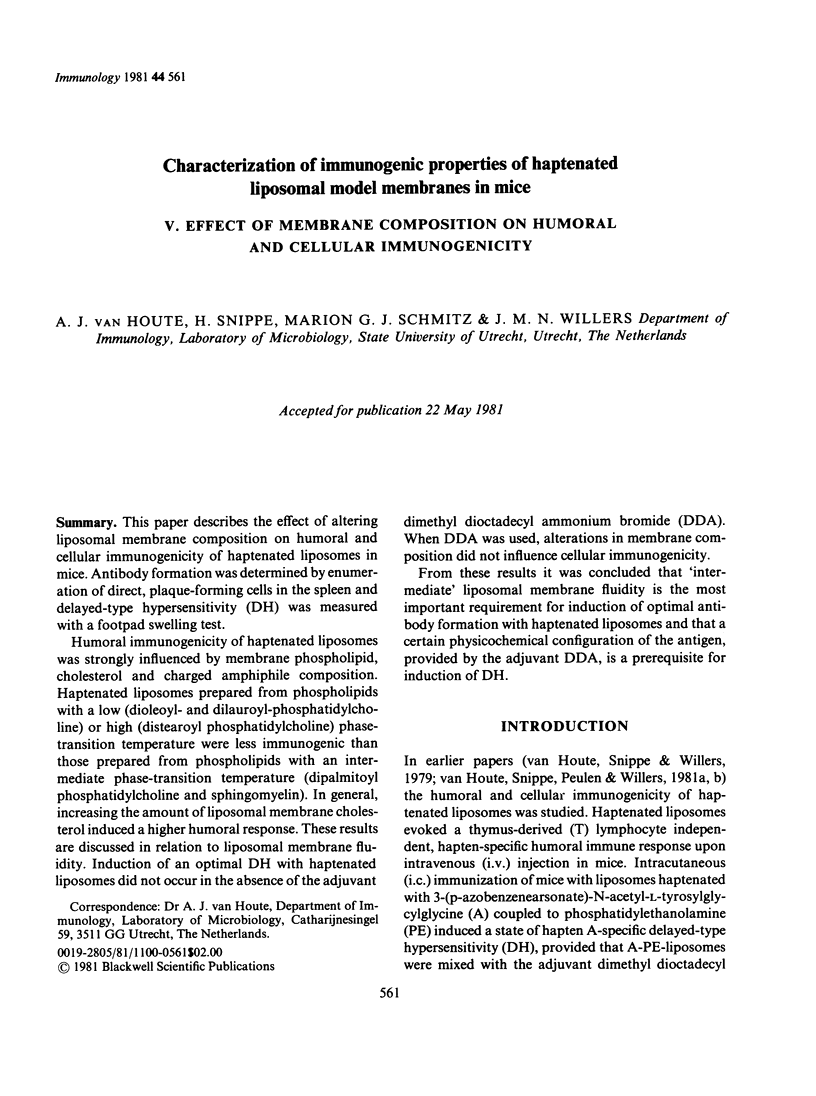
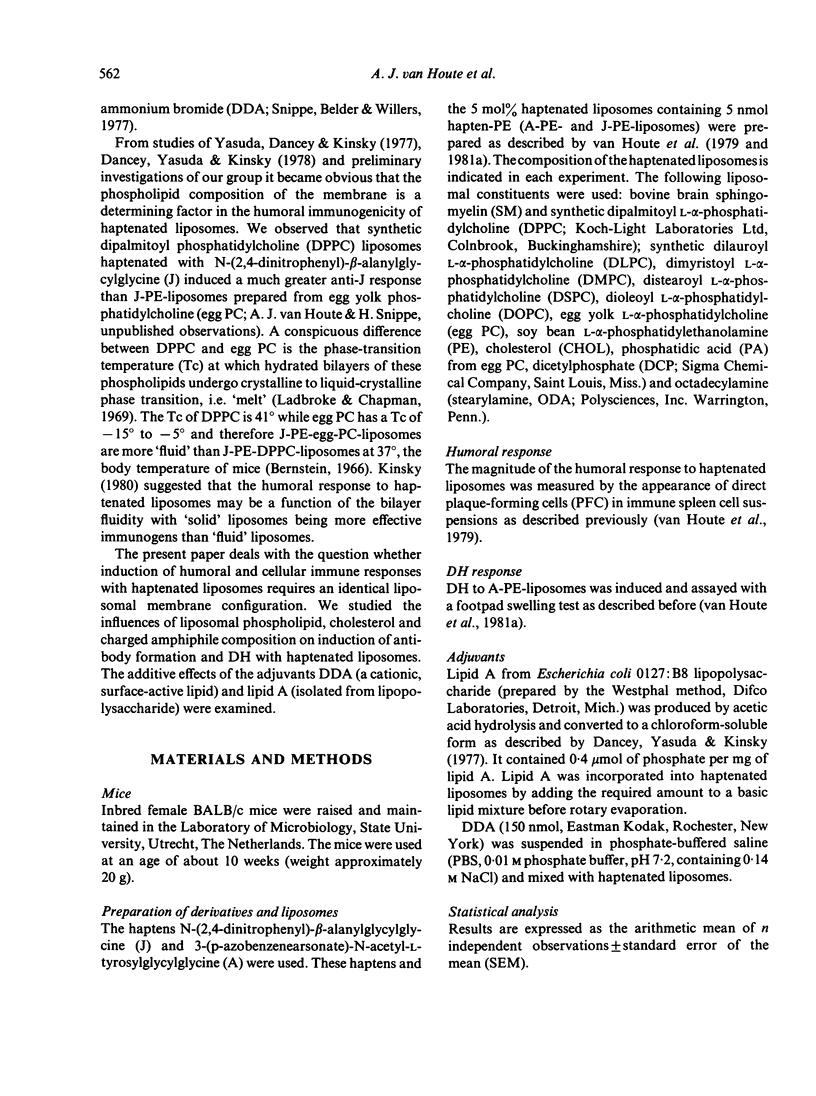
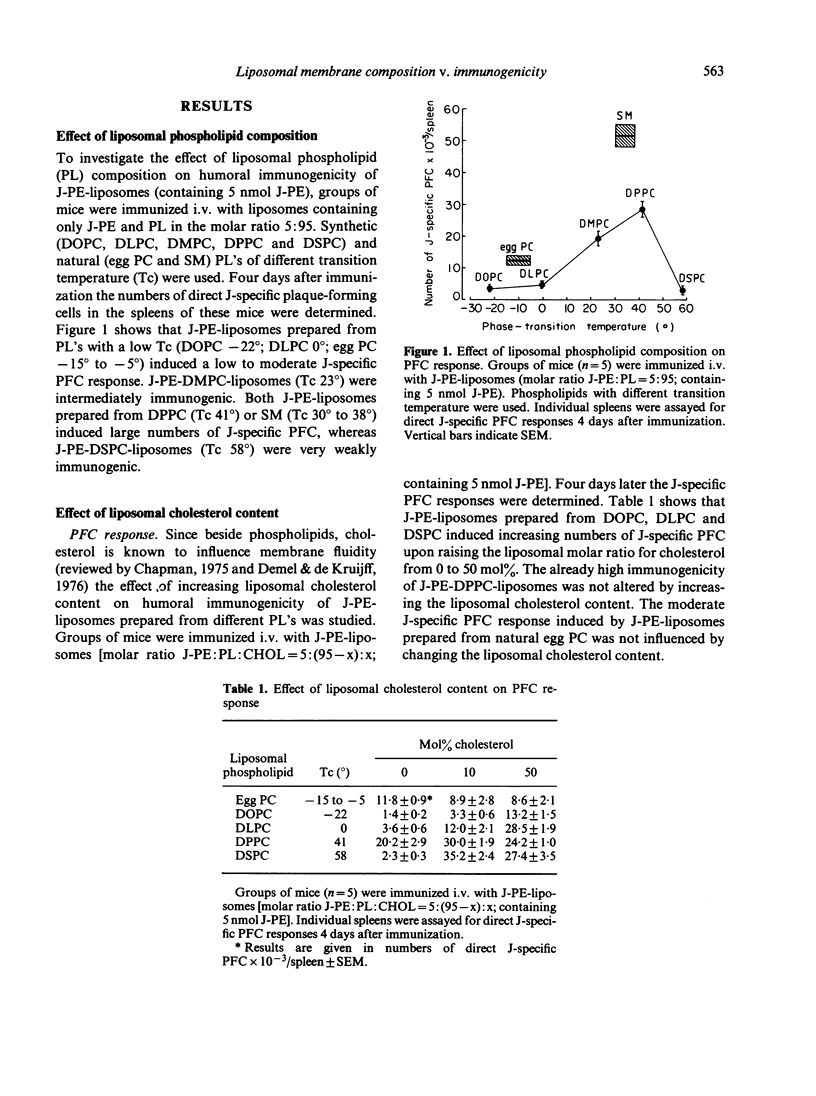
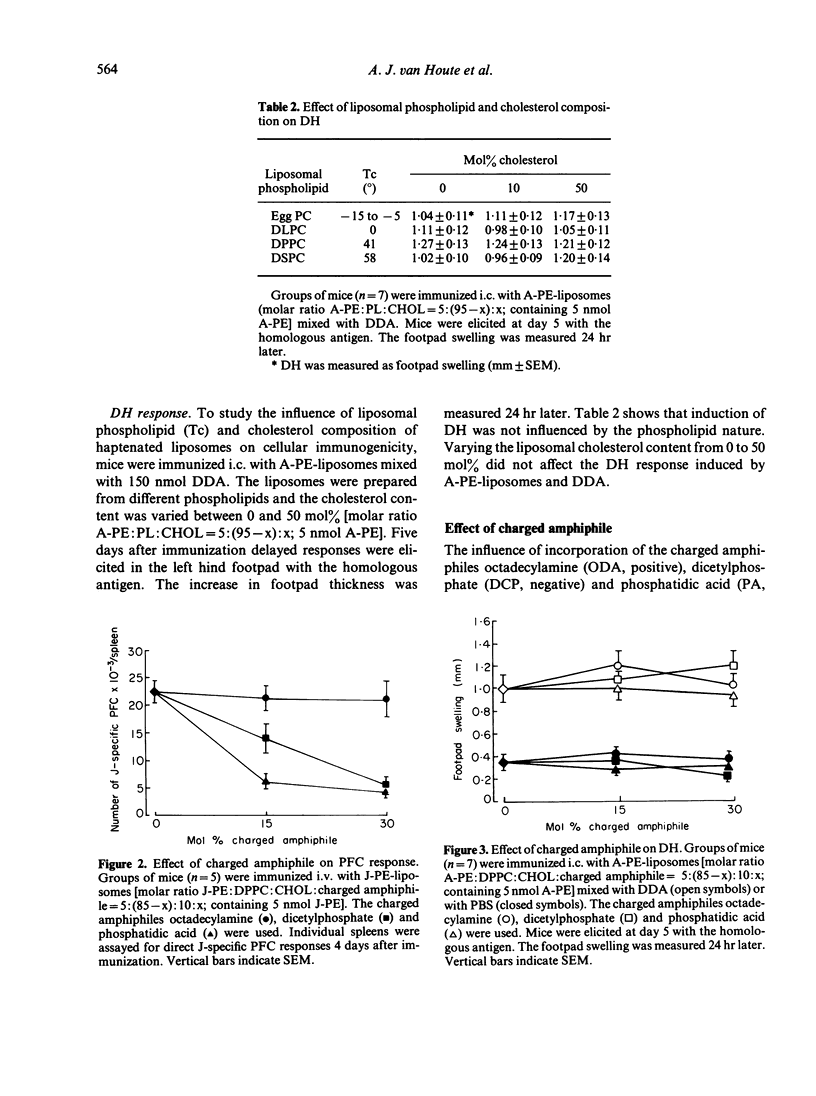
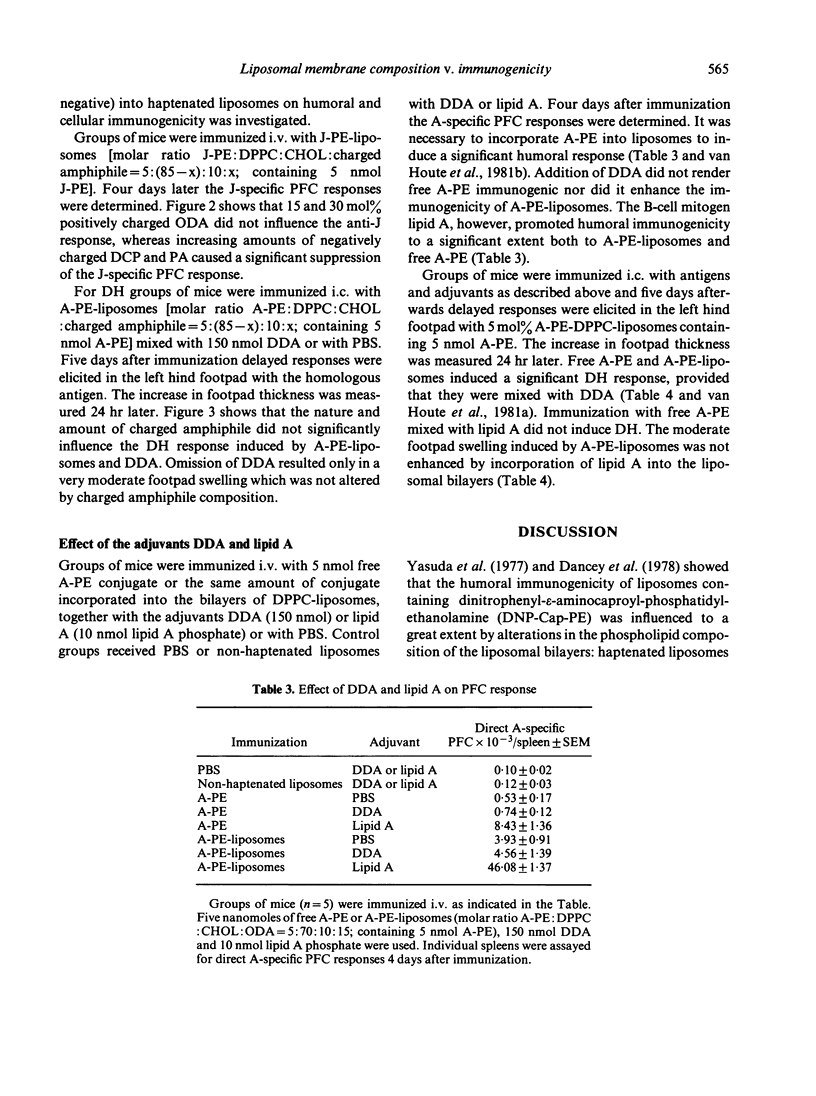
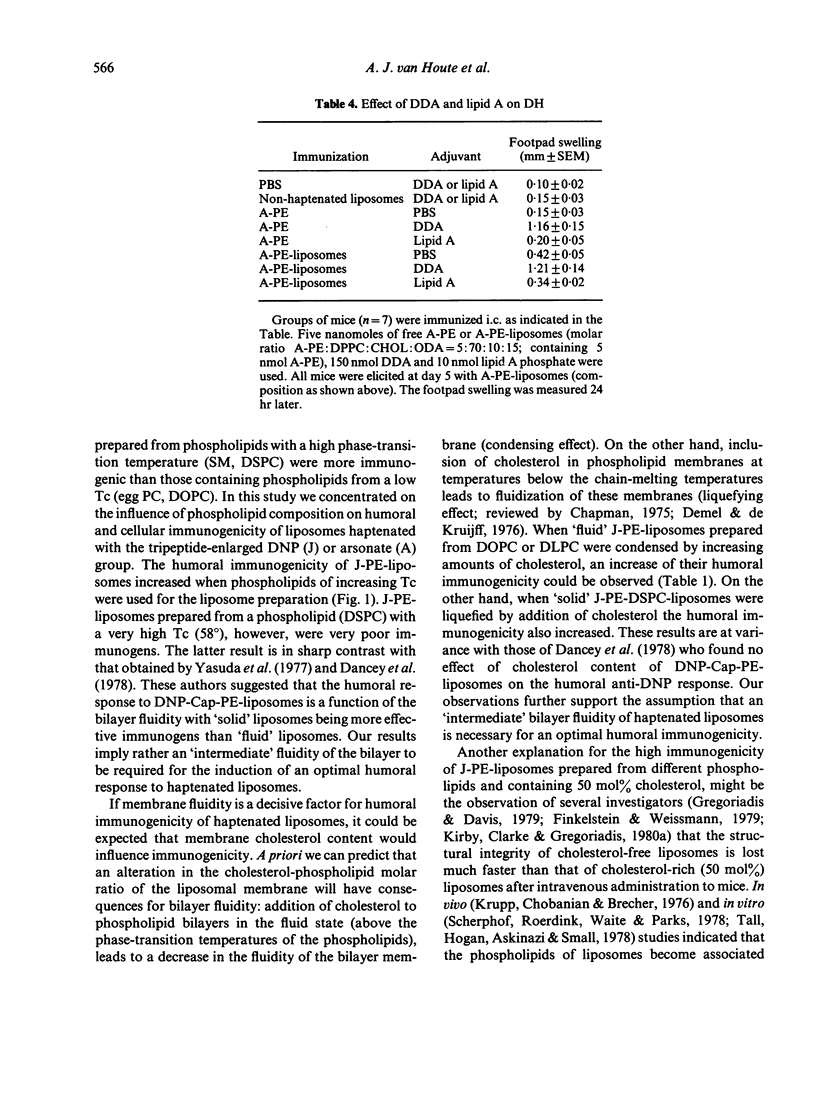
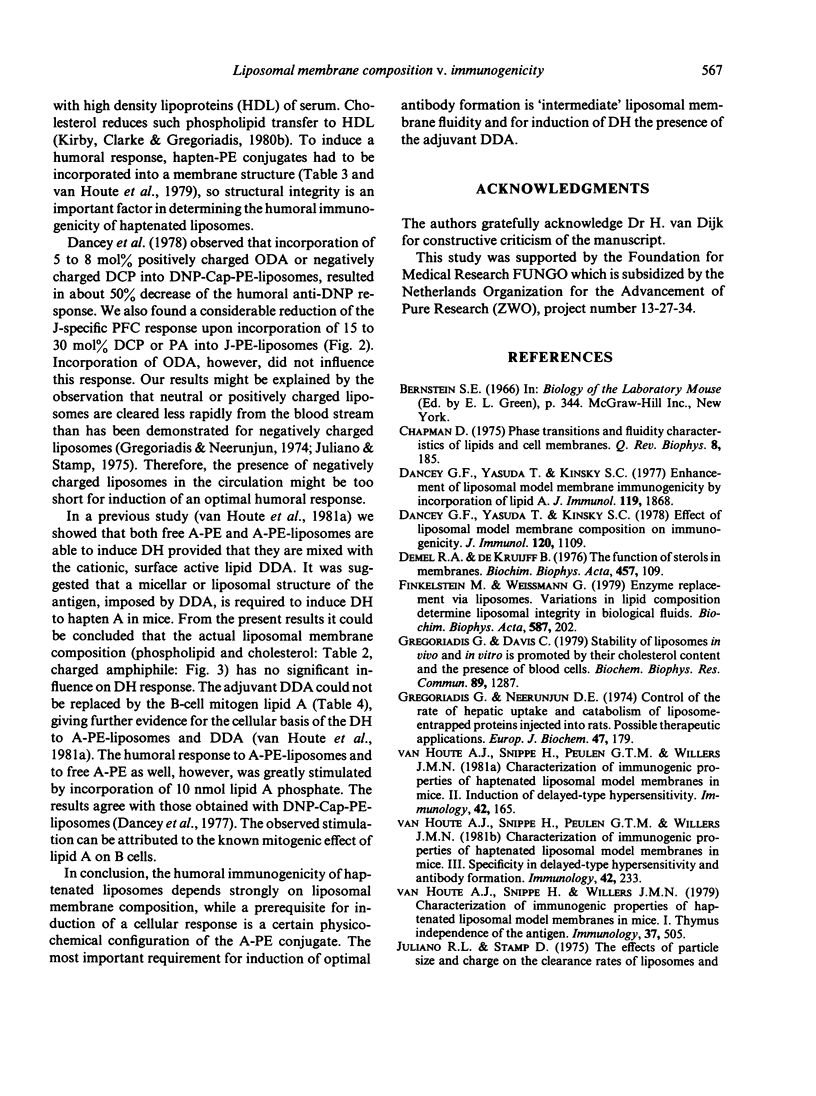
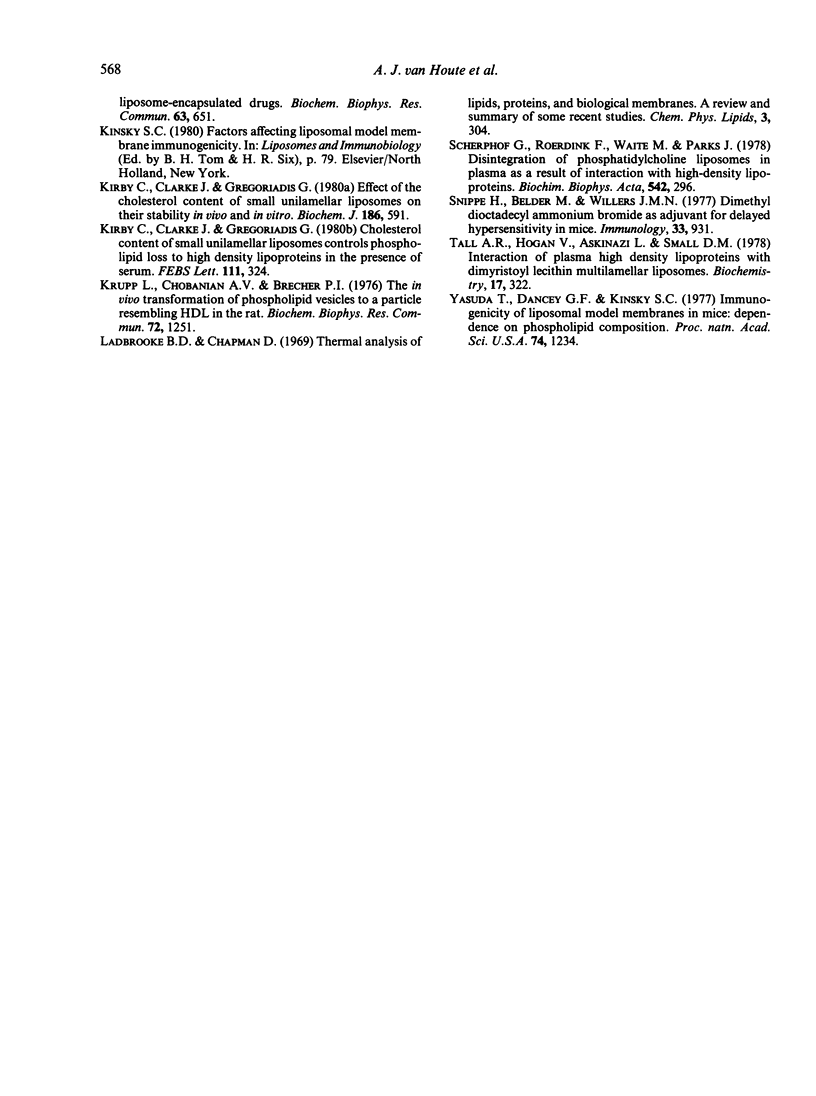
Selected References
These references are in PubMed. This may not be the complete list of references from this article.
- Chapman D. Phase transitions and fluidity characteristics of lipids and cell membranes. Q Rev Biophys. 1975 May;8(2):185–235. doi: 10.1017/s0033583500001797. [DOI] [PubMed] [Google Scholar]
- Dancey G. F., Yasuda T., Kinsky S. C. Effect of liposomal model membrane composition on immunogenicity. J Immunol. 1978 Apr;120(4):1109–1113. [PubMed] [Google Scholar]
- Dancey G. F., Yasuda T., Kinsky S. C. Enhancement of liposomal model membrane immunogenicity by incorporation of lipid A. J Immunol. 1977 Dec;119(6):1868–1873. [PubMed] [Google Scholar]
- Demel R. A., De Kruyff B. The function of sterols in membranes. Biochim Biophys Acta. 1976 Oct 26;457(2):109–132. doi: 10.1016/0304-4157(76)90008-3. [DOI] [PubMed] [Google Scholar]
- Finkelstein M. C., Weissmann G. Enzyme replacement via liposomes. Variations in lipid compositions determine liposomal integrity in biological fluids. Biochim Biophys Acta. 1979 Oct 4;587(2):202–216. doi: 10.1016/0304-4165(79)90354-4. [DOI] [PubMed] [Google Scholar]
- Gregoriadis G., Davis C. Stability of liposomes in vivo and in vitro is promoted by their cholesterol content and the presence of blood cells. Biochem Biophys Res Commun. 1979 Aug 28;89(4):1287–1293. doi: 10.1016/0006-291x(79)92148-x. [DOI] [PubMed] [Google Scholar]
- Gregoriadis G., Neerunjun D. E. Control of the rate of hepatic uptake and catabolism of liposome-entrapped proteins injected into rats. Possible therapeutic applications. Eur J Biochem. 1974 Aug 15;47(1):179–185. doi: 10.1111/j.1432-1033.1974.tb03681.x. [DOI] [PubMed] [Google Scholar]
- Juliano R. L., Stamp D. The effect of particle size and charge on the clearance rates of liposomes and liposome encapsulated drugs. Biochem Biophys Res Commun. 1975 Apr 7;63(3):651–658. doi: 10.1016/s0006-291x(75)80433-5. [DOI] [PubMed] [Google Scholar]
- Kirby C., Clarke J., Gregoriadis G. Cholesterol content of small unilamellar liposomes controls phospholipid loss to high density lipoproteins in the presence of serum. FEBS Lett. 1980 Mar 10;111(2):324–328. doi: 10.1016/0014-5793(80)80819-2. [DOI] [PubMed] [Google Scholar]
- Kirby C., Clarke J., Gregoriadis G. Effect of the cholesterol content of small unilamellar liposomes on their stability in vivo and in vitro. Biochem J. 1980 Feb 15;186(2):591–598. doi: 10.1042/bj1860591. [DOI] [PMC free article] [PubMed] [Google Scholar]
- Krupp L., Chobanian A. V., Brecher P. I. The in vivo transformation of phospholipid vesicles to a particle resembling HDL in the rat. Biochem Biophys Res Commun. 1976 Oct 18;72(4):1251–1258. doi: 10.1016/s0006-291x(76)80149-0. [DOI] [PubMed] [Google Scholar]
- Ladbrooke B. D., Chapman D. Thermal analysis of lipids, proteins and biological membranes. A review and summary of some recent studies. Chem Phys Lipids. 1969 Dec;3(4):304–356. doi: 10.1016/0009-3084(69)90040-1. [DOI] [PubMed] [Google Scholar]
- Scherphof G., Roerdink F., Waite M., Parks J. Disintegration of phosphatidylcholine liposomes in plasma as a result of interaction with high-density lipoproteins. Biochim Biophys Acta. 1978 Aug 17;542(2):296–307. doi: 10.1016/0304-4165(78)90025-9. [DOI] [PubMed] [Google Scholar]
- Snippe H., Belder M., Willers J. M. Dimethyl diotadecyl ammonium bromide as adjuvant for delayed hypersensitivity in mice. Immunology. 1977 Dec;33(6):931–936. [PMC free article] [PubMed] [Google Scholar]
- Tall A. R., Hogan V., Askinazi L., Small D. M. Interaction of plasma high density lipoproteins with dimyristoyllecithin multilamellar liposomes. Biochemistry. 1978 Jan 24;17(2):322–326. doi: 10.1021/bi00595a020. [DOI] [PubMed] [Google Scholar]
- Yasuda T., Dancey G. F., Kinsky S. C. Immunogenicity of liposomal model membranes in mice: dependence on phospholipid composition. Proc Natl Acad Sci U S A. 1977 Mar;74(3):1234–1236. doi: 10.1073/pnas.74.3.1234. [DOI] [PMC free article] [PubMed] [Google Scholar]
- van Houte A. J., Snippe H., Peulen G. T., Willers J. M. Characterization of immunogenic properties of haptenated liposomal model membranes in mice. II. Induction of delayed-type hypersensitivity. Immunology. 1981 Jan;42(1):165–173. [PMC free article] [PubMed] [Google Scholar]
- van Houte A. J., Snippe H., Peulen G. T., Willers J. M. Characterization of immunogenic properties of haptenated liposomal model membranes in mice. Immunology. 1981 Feb;42(2):233–239. [PMC free article] [PubMed] [Google Scholar]
- van Houte A. J., Snippe H., Willers J. M. Characterization of immunogenic properties of haptenated liposomal model membranes in mice. I. Thymus independence of the antigen. Immunology. 1979 Jun;37(2):505–514. [PMC free article] [PubMed] [Google Scholar]


